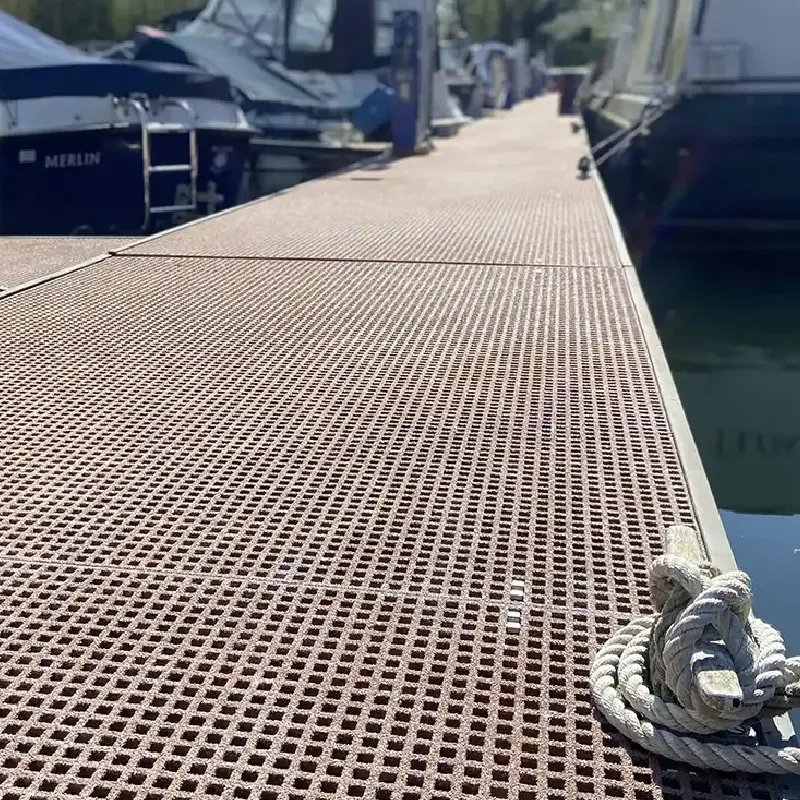loading...
- No. 9, Xingyuan South Street, Dongwaihuan Road, Zaoqiang County, Hengshui, Hebei, China
- admin@zjcomposites.com
- +86 15097380338
- Welcome to visit our website!
reinforced concrete with frp bars mechanics and design
Reinforced Concrete with FRP Bars Mechanics and Design
Reinforced concrete has long been the material of choice for construction due to its strength, durability, and versatility. Traditionally, steel bars have been used as reinforcement to improve tensile capacity, but in recent years, Fiber-Reinforced Polymer (FRP) bars have emerged as a promising alternative. This article explores the mechanics and design considerations of reinforced concrete utilizing FRP bars, highlighting their advantages over traditional materials.
Understanding FRP Bars
FRP bars are composite materials made of fibers (typically carbon, glass, or aramid) embedded in a resin matrix. These bars boast several beneficial properties they are lightweight, corrosion-resistant, and possess high tensile strength. Unlike steel, FRP bars do not corrode when exposed to moisture or aggressive environments, making them particularly advantageous for structures located in harsh conditions, such as bridges, coastal facilities, and chemical plants.
Mechanical Properties
The mechanical performance of FRP bars is a critical aspect of their application in reinforced concrete. The tensile strength of FRP bars can exceed that of steel, providing the potential for thinner structural elements and reduced dead loads. However, FRP has lower modulus of elasticity compared to steel, which results in increased deflection under service loads. This characteristic necessitates careful design considerations to avoid excessive deformations.
Furthermore, the bond between FRP bars and concrete is crucial for the composite action. While FRP bars are often more slip-resistant than steel, their performance can be affected by the type of fibers, the resin used, and the surface treatment of the bars. Engineers must ensure adequate bond strength to maintain structural integrity, particularly under varying environmental conditions.
Design Considerations
reinforced concrete with frp bars mechanics and design

When designing reinforced concrete structures with FRP bars, several unique considerations come into play. First, the lack of ductility in FRP compared to steel means that design codes must be adjusted to account for the brittle failure modes that FRP may exhibit. Engineers are encouraged to implement safety factors to mitigate risks associated with sudden failures.
Second, the serviceability requirements of structures reinforced with FRP must be carefully evaluated. Given the lower modulus of elasticity, structures may experience larger deflections and vibrations. To address this, design teams may opt for additional reinforcement or control systems to enhance performance.
Third, environmental factors must be taken into account during design. The thermal properties of FRP differ significantly from those of concrete and steel. For instance, temperature fluctuations can lead to differential expansion and contraction, which can induce stresses in the composite material. Thus, expansion joints and proper detailing are critical to ensure the longevity of the structure.
Applications and Case Studies
Reinforced concrete structures utilizing FRP bars have seen successful implementation in various projects worldwide. One notable example is the construction of bridges in seismically active regions. The lightweight nature of FRP facilitates easier handling and reduces seismic forces on the structure. Moreover, the corrosion resistance of FRP bars allows these bridges to withstand the harsh conditions often found in coastal areas.
In addition to bridges, FRP bars have been utilized in retrofitting existing structures. By replacing corroded steel reinforcement with FRP, engineers can enhance the performance and extend the service life of aging infrastructures. This application is particularly valuable in urban environments where maintenance work must minimize disruption.
Conclusion
The integration of FRP bars in reinforced concrete design presents exciting opportunities for constructing resilient and sustainable structures. While there are challenges associated with their application, advancements in materials science and engineering practices continue to enhance the reliability of FRP-reinforced concrete. As the industry evolves, further research and case studies will broaden our understanding and encourage the adoption of this innovative technology. By embracing FRP bars, the future of reinforced concrete construction looks promising, paving the way for safer, more durable, and environmentally friendly structures.
-
GRP Structures: The Future of Lightweight, High-Performance EngineeringNewsJun.20,2025
-
FRP Water Tank: High-Performance Storage for Corrosive and Clean Water SystemsNewsJun.20,2025
-
FRP Square Tube: The New Industry Standard for Chemical and Structural ApplicationsNewsJun.20,2025
-
FRP Pultruded Profiles: The Ultimate Choice for Lightweight Structural StrengthNewsJun.20,2025
-
FRP Handrails: The Safer, Smarter, and Stronger Choice for Modern InfrastructureNewsJun.20,2025
-
FRP Grating: The Smart Solution for Durable, Lightweight Industrial FlooringNewsJun.20,2025
-
Why Choose a Galvanized Water Tank for Your Storage NeedsNewsMay.21,2025
